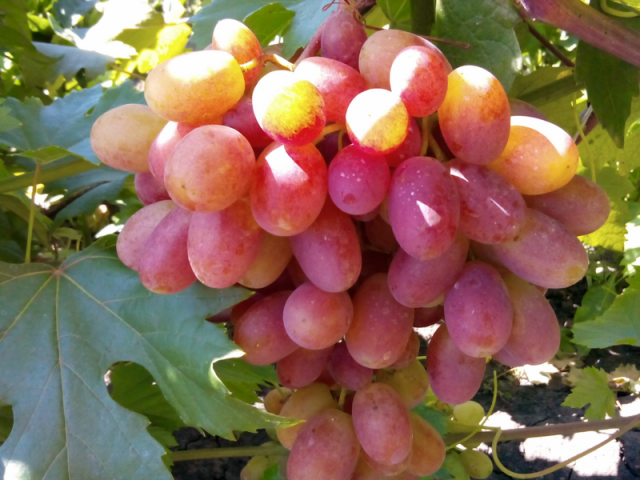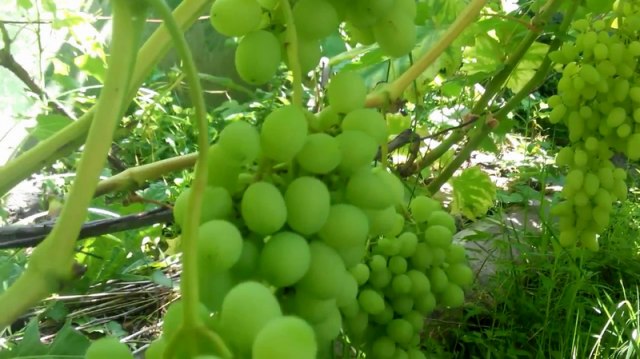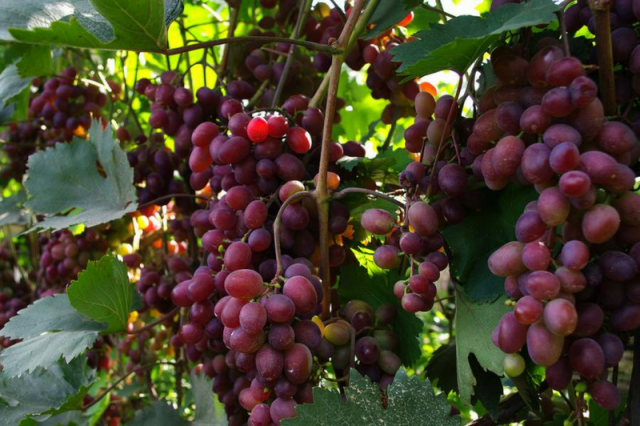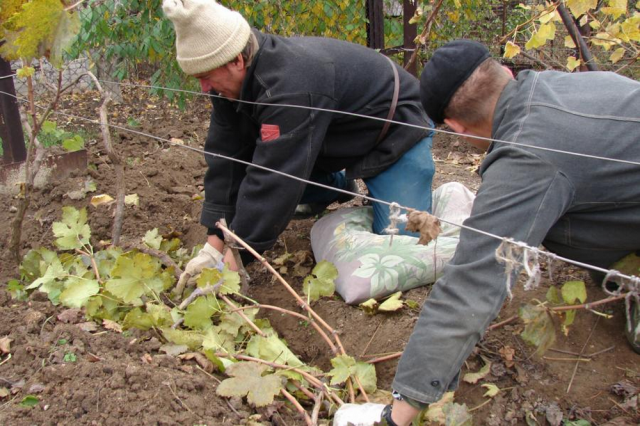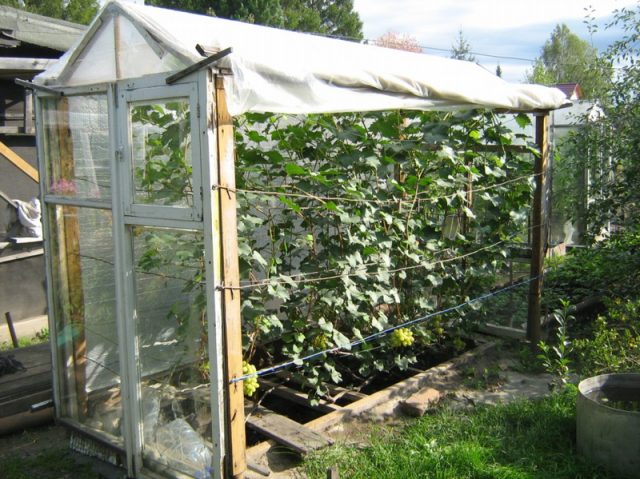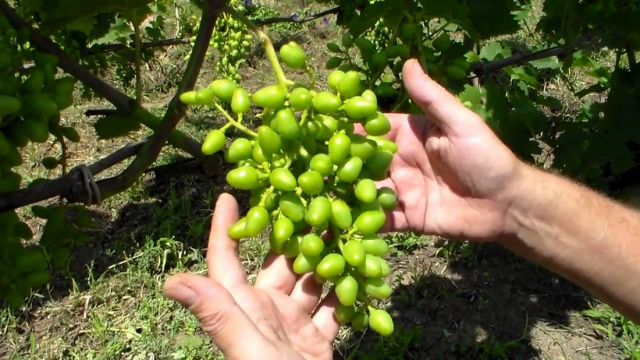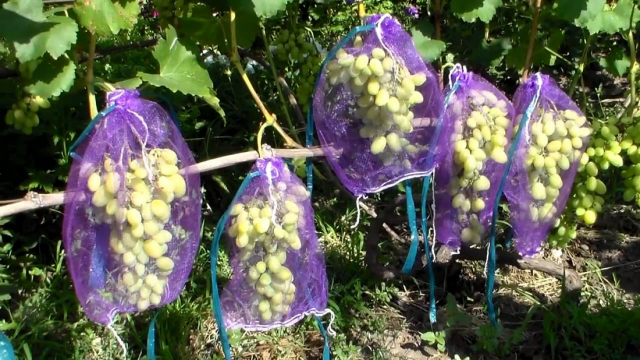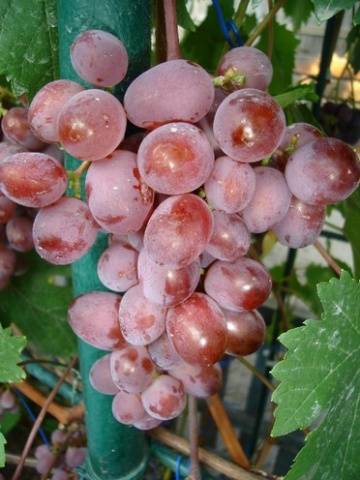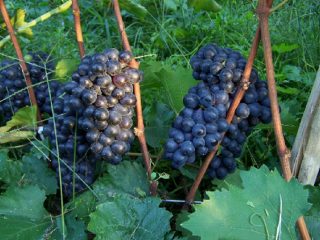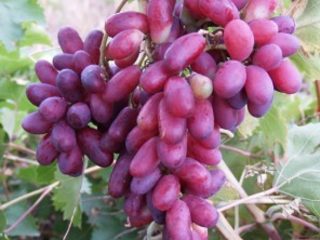Content
Growing grapes in a summer cottage is like an art that only the worthy possess. Experienced winegrowers proudly show their familiar summer residents large ripe bunches. It is better to comprehend this art from unpretentious, proven varieties. One of these is Victoria. Growing this old grape variety is easy for beginners. Even with imperfect agricultural technology, Victoria grapes give stable yields. The variety is highly resistant to adverse environmental factors. If you please the plant with special attention, it will thank you with a record high yield of large table berries.
Recommended growing regions
Due to its high frost resistance and good ripening of shoots, Victoria is successfully grown in the Middle Volga region and the Moscow region. It is also suitable for the Urals and Siberia. The variety is not intended for industrial cultivation, but is often found in amateur vineyards.
In the Moscow region, Victoria is a covering variety, in the southern regions it is cultivated without shelter.
Strengths and weaknesses of the variety
The early ripe grape variety Victoria belongs to the group of table grapes. It is known for its bright taste with nutmeg notes. It is the taste of grapes that is most often noted in reviews. From the presented photos, you can appreciate the attractiveness of the beautifully colored Victoria bunches.
The grapes are of medium vigor. Intensive shaping is not required. On the contrary, since the sap flow of the variety begins early, spring pruning can be abandoned if excessive juicing is observed. Weak growth is characteristic only of self-rooted seedlings. If a high-quality Victoria seedling is grafted onto a vigorous stock, the bush will grow faster.
The next varietal feature is the predominance of female-type flowers, which ensures high productivity. This must be taken into account when planting a vineyard. Poor pollination leads to the formation of small grapes. To exclude such a possibility, it is enough to plant a pollinator variety nearby. It is selected for the timing of flowering. For example, Victoria will do Radiant kishmish, Bianca and Augustine.
The Victoria variety has the following strengths:
- high productivity;
- uniform ripening of the bunch;
- excellent marketability;
- disease resistance 2.5 - 3 points;
- frost resistance up to minus 27 ºC;
- 100% ripening of shoots;
- rooting rate of cuttings at the level of 90 - 100%.
Five out of ten experienced winegrowers, judging by the reviews, consider Victoria to be overly moody and outdated. This opinion may arise due to the differences in agricultural techniques from those generally accepted for grapes. Also, the Victoria variety has the following weaknesses:
- tendency to cracking the thin skin of berries;
- attractiveness to wasps;
- "Pea" berries (rationing of the bush load is required)
Having studied the description of the Victoria grape variety with photos and reviews, you can easily make your choice when replenishing the collection.
Technical characteristics of berries
The tasting assessment of the grapes of the described grape variety fully explains its popularity and value. The pictorial table below perfectly demonstrates Victoria's obvious merits.
Indicator | Characteristic |
Ripening period | 115 - 120 days (in Central Russia, berries ripen in mid - late August) |
The shape and weight of the bunch | conical; maximum - 700 g, medium - 500 g, the lower clusters are small and it is customary to remove them |
Density of the bunch | medium, sometimes loose |
Coloring berries | crimson red, uneven, with a slight bloom |
Berry shape Average berry weight | oval-ovoid, about 30 mm long 6 to 7.5 g |
Skin | thin |
Pulp | juicy, meaty, crispy |
Sugar content,% | 19 |
Acidity, g / l | 5 — 6 |
Taste qualities of berries | sweet, aromatic, when fully ripe, nutmeg notes appear |
Victoria's attractive characteristics offset some of the agronomic requirements described below.
Features of agricultural technology and disease resistance
Victoria grapes are distinguished by their early maturity. He gives the first harvest already 2 - 3 years after planting the seedlings. The best planting time is autumn, October. Before frost, the seedling must have time to take root. In the first year of Victoria, good shelter is required: special nonwovens, dusting with dry earth, mulching of the root zone. Mature plants overwinter under a lightweight shelter.
We will not describe all the generally accepted rules for planting and caring for grapes, but immediately move on to the nuances inherent in a particular variety.
Due to the tendency of the variety to crack ripening berries, watering must be carried out correctly. With the onset of the ripening period (August), artificial watering is completely excluded, but only if precipitation is present. If there is a drought, then moderate watering is needed. Otherwise, when it rains, a sharp drop in the level of soil moisture will provoke cracking of the peel of the berries.
During the growing season, it is recommended to apply organic fertilizers and wood ash under the grapes (in the spring and before flowering). Victoria responds well to leaf dressing with chelated microelements, which increase disease resistance, improve the taste of berries.
Due to the functional feminine bloom, Victoria grapes are prone to overload. Productivity must be formed, leaving no more than 30 eyes to one bush (if fruit shoots have 5 - 8 eyes). The number of clusters on one shoot is also normalized, the average number is 1.8.
To get a full-bodied beautiful bunch, growers carry out "combing out" it with a paint brush at the beginning of berry growth. This procedure removes weak, underdeveloped, damaged ovaries. At first, the bunch looks bare and too sparse, but as the berries grow, it acquires an excellent presentation.
In Victoria, which forms clusters prone to decay, mold, damage by wasps, the lower brushes should not be left. From them you will not get an increase in yield, but you will create an excellent breeding ground for diseases and bait for insects.
The fan-shaped method of forming the bush is preferable to the variety, providing better ventilation. To protect against wasp raids, summer residents use crops of spicy herbs, cover the bunches with bags of mesh or gauze.
Useful Variety Reviews
Having studied in detail the description of the variety, you always want to know the opinion of those who already have experience in growing it. Ideally, if the experience matches your agro-climatic zone. Consider this point when analyzing reviews. For a region with excessive moisture, there will be some recommendations, and for the arid Volga region, completely different ones. The taste and color of grapes will also vary slightly.
In the following video, the author shares his experience of growing Victoria and demonstrates ripe bunches:
Here are some helpful reviews for beginners and seasoned wine growers about Victoria:
If we analyze a large number of reviews from winegrowers from different regions of Russia, then it can be noted that Victoria is quite unpretentious. The predominantly positive nature of the reviews gives reason to recommend the variety for amateur gardeners.

